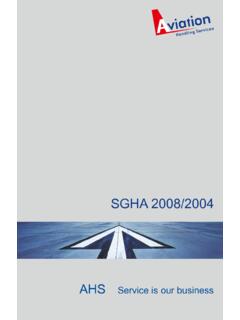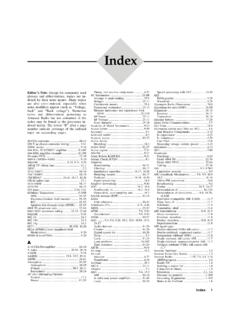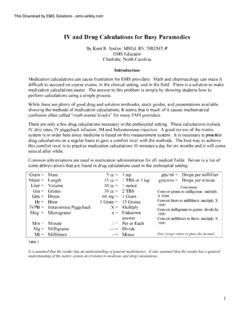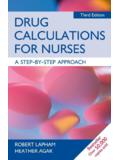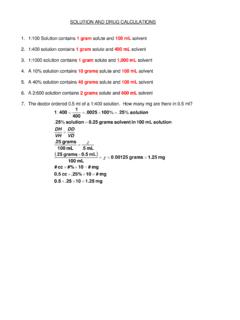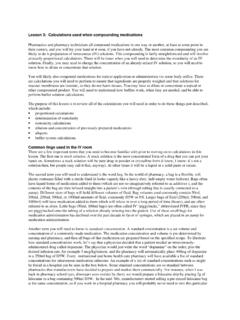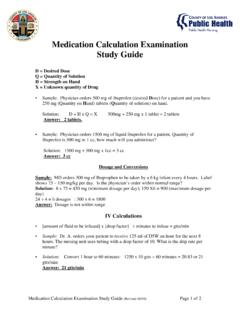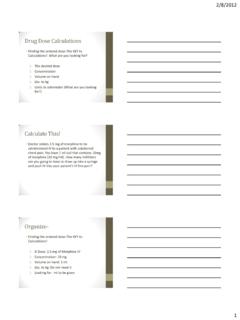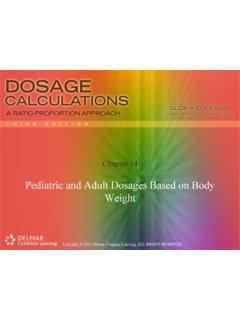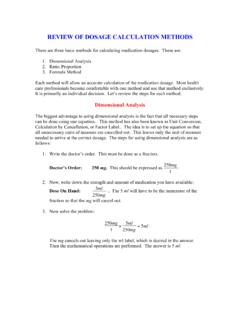Transcription of Good practice for drug calculations
1 A step-by-step guide for nurses, doctors and all other healthcare professionalsPharmacyservicesGood practice for drug calculations7048 drug Cal Guide A6 122/07/2014 09:552 Contents PageIntroduction 3 Commonly used abbreviations 4 Top tips 5 Converting units of weight and volume 6 Calculating concentrations 8 Ratios 10 Calculating Oral doses in tablets 12 Oral doses for children and neonates 14 IV drug doses 16 Drip rates for gravity flow infusions 18 Infusion rates for infusion devices 20 Rates for syringe drivers 23 IV drug doses for children and neonates 25 Further reading 287048 drug Cal Guide A6 222/07/2014 09.
2 553 IntroductionCalculation errors are listed as one of the main risks with injectable medicines, outlined in the National Patient Safety Agency (NPSA) alert *Of all medication errors successfully reported to the National Patient Safety Agency s National Reporting and Learning system between January 2005 and June 2006, wrong dose, strength or frequency was the most common type of error ( ).1 The aim of this pocket guide is to reduce patient safety incidents related to drug calculations by providing clear instructions and examples for healthcare professionals who perform such calculations .
3 Paediatric calculations have also been included and are highlighted with a green calculationsWhen double-checking a calculation , perform the calculation independently and then compare your answer with your colleague s answer. The answers should be the same. If the answers are different, both practitioners should repeat the calculation independently and compare answers they are still different, contact a more senior colleague or a pharmacist for advice before prescribing or administering the dose.* Note that the NPSA is now part of NHS drug Cal Guide A6 322/07/2014 09:554 Commonly used abbreviationsNOTE: Many Trusts drug policies state that certain abbreviations should not be used in prescriptions because they are a source of errors if misunderstood.
4 Usually accepted abbreviationskilogram kggram gmilligram mgmicrogram should always be written as microgramnanogram should always be written as nanogramlitre Lmillilitre ml or mLunits or international units should always be written as units or international unitsmillimoles mMol or mmolThe use of fractional doses is unsafe and should be avoided should be written as 100mg should be written as 500 microgramThe unnecessary use of decimal points should be avoided 3mg not drug Cal Guide A6 422/07/2014 09.
5 555 Top tips Drugs are formulated into medicines in such a way that most adult doses are easily calculated and predictable, 1 or 2 tablets, 1 or 2 capsules, 1 vial or ampoule of an injectable medicine, 1 suppository Before doing a calculation , it is sensible to estimate the dose you are likely to require so that you know whether your calculated answer seems reasonable, roughly what you expected To check doses use a reliable reference source, such as the BNF or BNF for Children For recommended administration methods, see local drug policies or national guides such as The IV Guide Dose volumes of oral liquid medicines are typically 5-20ml for adults and 5ml or less for children Crushing tablets should be avoided wherever possible.
6 Some tablets, such as modified release products should never be crushed. Always ask your pharmacist s advice before crushing tablets. If it must be done, a pestle and mortar or tablet crusher should be used and the tablet ground to as fine a powder as possible Always check children s and babies weights carefully. Make sure they are weighed in kg and that their weight is recorded in kg If a calculation using weight or surface area gives an answer equivalent to or greater than the normal adult dose, reconfirm that it is what is really required If you are in any doubt about a calculation , stop and contact the ward pharmacist, an on-call pharmacist or the prescriber7048 drug Cal Guide A6 522/07/2014 09.
7 556 Converting units of weight and volumeMetric units of measurementWeight Volume1kg = 1000g 1L = 1000ml 1g = 1000mg 1ml Weighs 1g 1mg = 1000 micrograms 1000ml Weighs 1000g or 1kg 1 microgram = 1000 nanograms 10- or 100-fold errors can occur if dosing units are converted may be calculated by bodyweight or body surface body surface area calculations in paediatrics, see BNF for drug Cal Guide A6 622/07/2014 09:557 Converting units of weight and volumeExample 1A prescription for metformin 1g.
8 How many milligrams is this?To convert grams to milligrams multiply by 10001g = 1 x 1000 = 1000mgExample 2A patient is prescribed digoxin. How many micrograms is this?To convert milligrams to micrograms multiply by = x 1000 micrograms = microgramsExample 3 Amiodarone 5mg per kg body weight in 100ml 5% glucose over 20 mins is prescribed. The patient weighs 60kg. To calculate the dose Dose = 5(mg) x 60(kg) = 300mgSee also pages 14 and 15 for examples of this type of drug Cal Guide A6 722/07/2014 09:558 Calculating concentrationsPrinciplesThe way the strength of a drug in a solution is described will affect the way a dose calculation is carried out.
9 Doses may be expressed in a number of different ways:1. Mass (weight) per volume of solution, mg in 10ml, Units of activity per volume of solution, units per Percentage. This is the weight of the drug in grams that is contained in each 100ml of the solution. Common examples are sodium chloride; 5% strength 1ml of solution 100ml of solution 250ml of solution 1000ml of solution of solution contains contains contains contains1% 10mg of drug 1g of drug of drug 10g of drug10% 100mg of drug 10g of drug 25g of drug 100g of drug20% 200mg of drug 20g of drug 50g of drug 200g of drug If you know the number of grams in 1000ml, divide by 10 to convert to % strength If you know the % strength, multiply by 10 to give the number of grams of drug in 1000ml If you know the % strength.
10 Divide by 100 to calculate the amount of drug in 1ml7048 drug Cal Guide A6 822/07/2014 09:559 Calculating concentrationsExample 1 The prescribed dose is 1g magnesium sulphate. Magnesium sulphate 50% injection is available. 50% = 50g in 100ml. How many ml contains 1g magnesium sulphate?Number of ml containing 1g = 100ml x1g = 2ml 50gAnother way of thinking about this is: 50g in 100ml = 5g in 10ml = 1g in 2mlExample 2 Thiopentone infusion is prescribed. What volume is required to administer a dose of 100mg?
